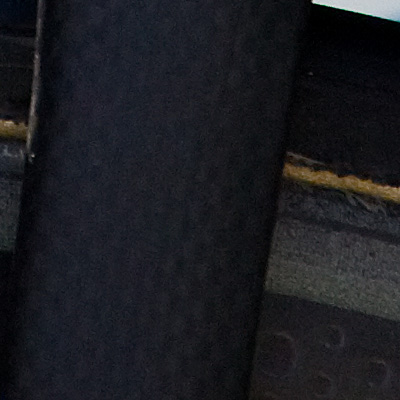I posted earlier today about increasing availability of the Canon EOS 5D II at places like B&H, so I thought it might be useful to begin posting on some of my experiences with the camera during the couple of weeks (and perhaps a thousand frames) that I’ve had it. Here is a copy of something I posted elsewhere earlier this week, in response to a post concerning image quality from this camera:
I’ve shot with cropped sensor bodies extensively in the past. I have shot with a full-frame 5D for the past two years. I recently began shooting with a 5DII and have done a thousand or so frames with it.
I cannot see image quality problems in my images, even in those that stress the ability of the camera in ways that should produce them if they are there: shooting wide dynamic range scenes, using high ISOs (up to 1600), inspecting at large on-screen magnifications, and making careful prints.
My photos have very low noise all the way through the shadows to pure black, even in some photographs where I’ve pushed the shadows either during RAW conversion and/or via the shadow/highlight tool in post. I’m seeing very highly detailed images with smooth tonal transitions. As far as I’ve seen the 5D II has a rather substantial dynamic range – as reported in a number of tests – and it is at least as great as that of the 5D.
Let me repost a couple of 100% magnification crops that I posted elsewhere from the 5DII.
The first was shot at ISO 100 at, IIRC, f/16 using a 35mm prime with the camera on tripod. The crop is a 100% magnification section from the very far lower right corner of the shot. The dark areas were pushed slightly, too, so if there were noise anywhere it would certainly appear here – but I don’t see it even at this resolution, which would be equivalent to a print width of five or six FEET wide. Seems like pretty good resolution to me! (It also speaks well for the EF 35mm f/2 lens.)

The second example is pretty much a noise “torture test” – it is a very dark section of a much larger image. (Again a 100% crop). It was shot using a 100-400mm zoom handheld at ISO 400 in cloudy conditions. There is some noise in the shot, but that is entirely normal – and this noise would be completely invisible even in a very large print. (The pattern on the lighter fabric near the left side of the frame is that of the fabric itself.)

My observations from 100% on-screen pixel peeping are confirmed by the more important test of printing.
(If my post has helped you with a purchase decision, making your purchase from B&H through this link will help support the blog. Thanks!
Like this:
Like Loading...


